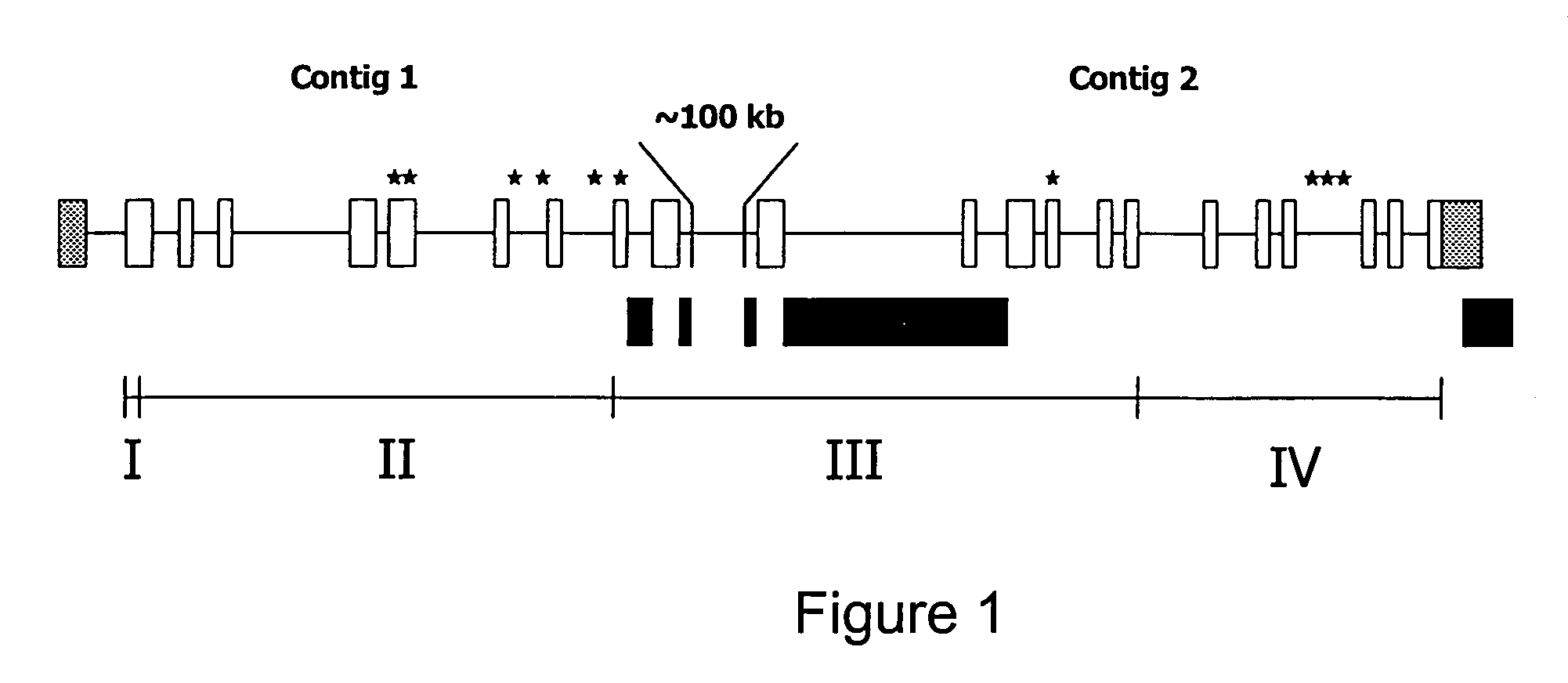Single nucleotide polymorphism markers in the bovine CAPN1 gene to identify meat tenderness
a single nucleotide polymorphism and bovine capn1 technology, applied in the field of single nucleotide polymorphism markers in the bovine capn1 gene, can solve the problems of one commercially available genetic test for meat, unfavorable animal palatability traits, and unfavorable animal selection techniques. , to achieve the effect of superior meat tenderness and increased meat tenderness
- Summary
- Abstract
- Description
- Claims
- Application Information
AI Technical Summary
Benefits of technology
Problems solved by technology
Method used
Image
Examples
example 1
Materials and Methods
BAC Sequencing
[0047]A random shotgun library was prepared from a Bacterial Artificial Chromosome (BAC) clone (Smith et al., 2000a, ibid; Warren W. et al. 2000. Construction and characterization of a new bovine bacterial artificial chromosome library with 10 genome-equivalent coverage. Mamm. Genome 11:662–663) containing the CAPN1 gene by partial digestion of ˜5 μg BAC DNA with the restriction enzyme CviJI (0.3 units per ul) essentially as described (Gingrich J. C. et al. 1996. Partial CviJI digestion as an alternative approach to generate cosmid sublibraries for large-scale sequencing projects. Biotechniques 21:99–104). Briefly, the DNA was incubated with enzyme in a 50 μl volume for twenty minutes, the resulting DNA smear was separated on a 1% agarose gel, and fragments in the 1 to 1.5 kb range were isolated using a commercial kit (Novagen, Madison, Wis.). The eluted fragments were ligated to pBluescript vector (Stratagene, La Jolla Calif.) that had been linear...
example 2
[0071]The SNPs at position 18 of exon 9 of Seq. ID No. 3, position 17 of exon 14 of Seq. ID No. 4, and position 185 on intron 19 of Seq. ID No. 4, of the bovine CAPN1 gene were evaluated for their association with shear force in the U.S. MARC GPE Cycle VII cattle population. Shear force data was collected from meat obtained from a total of 564 steers at 3 and 14 days of carcass aging. This data is additional to that found in the two populations described in Example 1. Shear force phenotypes of longissimus muscle from GPE Cycle VII steers were collected by the modified Warner-Bratzler shear force method as described (Shackelford S. D. et al. 1999. Evaluation of slice shear force as an objective method of assessing beef longissimus tenderness; Journal of Animal Science, Vol. 77, pp 2693–2699). Sires for this population included twenty of the top sires (by number of registered offspring) in each of seven breeds, which represent the top seven breeds by numbers of registered cattle in th...
PUM
| Property | Measurement | Unit |
|---|---|---|
| Tm | aaaaa | aaaaa |
| temperature | aaaaa | aaaaa |
| pH | aaaaa | aaaaa |
Abstract
Description
Claims
Application Information
 Login to View More
Login to View More - R&D
- Intellectual Property
- Life Sciences
- Materials
- Tech Scout
- Unparalleled Data Quality
- Higher Quality Content
- 60% Fewer Hallucinations
Browse by: Latest US Patents, China's latest patents, Technical Efficacy Thesaurus, Application Domain, Technology Topic, Popular Technical Reports.
© 2025 PatSnap. All rights reserved.Legal|Privacy policy|Modern Slavery Act Transparency Statement|Sitemap|About US| Contact US: help@patsnap.com

